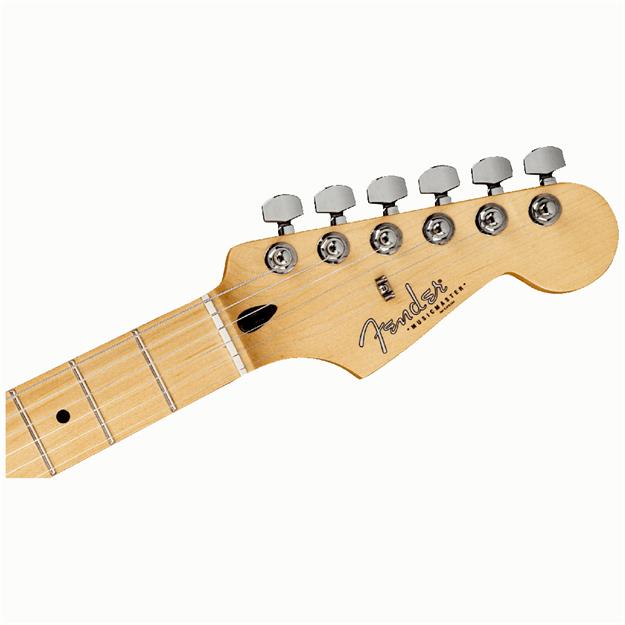
Created in 1956, this was Fender's first 3/4 scale student-model. Two hours with that bass, I realized I should stick with the guitar. With a single pickup and no vibrato system, it was a basic but functional instrument. Introduced in 1964, the Musicmaster was part of a redesign of Fender's line of student level guitars which included the Duo-sonic and the Mustang. As simple as can be, with just a volume and tone control for treble frequencies, the Musicmaster Bass Amp makes a fine home practice amp if you're in need of some good amount of fuzzy vintage tones. It features a single-piece maple neck and fingerboard. 1958 Vintage Fender Musicmaster Turned Duo-Sonic Refin Desert Tan Maple w/Case.

This amp was sort of looked over as Vibro Champs started fetching over $400. It has no 's just a low volume student bass amp with no balls what so ever. Script error: No such module "Check for unknown parameters".A Champ chassis is a slide-in fit, and many Champ players want to replace the 8" speaker with a 12" speaker. Script error: No such module "check isxn". London & New York: Cassell Script error: No such module "Catalog lookup link". Fender: The Golden Age, 1946–1970, a book by Martin Kelly, Terry Foster, Paul Kelly."Little Brothers Turn 50", an article by Terry Foster and Tim Pershing in Vintage Guitar, July 2006."Fender's 3/4 Scale Guitars", a two-part article by Tim Pershing in 20th Century Guitar, December 1996 and January 1997.Unlike the Duo Sonic, the neck pickup is a humbucker and the single coil is the bridge pickup. It features 2 pickups, a single coil and a humbucker, and is the same as the 2020 Duo-Sonic other than the pickup configuration. In 2020, Fender released a special version of the Musicmaster for the Shawn Mendes Music Foundation. The Musicmaster was produced until 1982 when it, the Bronco and the Mustang were dropped in favor of the newer Fender Lead models. This causes many modern surviving Musicmasters from this period to suffer from paint flaking off the body. Certain models of the Musicmaster, especially from between 19, were finished with a coat that reacted negatively with the base coat. These larger pickguards encompassed the entire control cavity which saved production costs for Fender. Later in the 70s the Musicmaster in its third incarnation was redesigned using the Bronco body and pickguard shapes. Around this same time the Fender Maverick was introduced using similar practices but with leftover Electric XII bodies and necks with Mustang bridges. In 1969, the Fender Swinger, a particularly interesting byproduct of this surplus was produced using the Musicmaster hardware, electrics, scratchplate, and the seldom ordered 22.5-inch necks, but with a modified Fender Bass V body. The Musicmaster in its second incarnation was still sold well into the 1970s however, using leftover parts until supplies ran out. The redesigned Musicmaster II alongside its stablemate the Duo-Sonic II lasted through 1969 before both models were dropped from production in favor of the more deluxe Mustang and new Fender Bronco. All three models were offered with the option of a 24-inch scale and 22-fret neck or a 22.5-inch scale and 21-fret neck the 24-inch scale proved to be the most popular of these options.

The Mustang body was larger and slightly offset, and was fitted with a plastic pickguard but with the volume and tone controls mounted on a separate metal plate. In 1964, following the release of the Fender Mustang, both the Musicmaster and Duo-Sonic were redesigned using Mustang neck and body blanks. At this time, the Musicmaster and Duo-Sonic both received a plastic pickguard in place of the previous anodized aluminum one, and a two-piece maple neck with a rosewood fingerboard. There was one major redesign of these two Musicmaster-bodied guitars, in 1959 when the entire Fender catalog was updated.

The Duo-Sonic and Musicmaster also shared a single-piece maple neck and fingerboard, with a 22.5 inch scale length and 21 frets. Production of the Musicmaster began in late April of that year, using a body routed for two pickups to be common to the Duo-Sonic, which followed a little more than two months later.

Prototypes were made in early 1956, followed by sales literature announcing both models. Design work on the Musicmaster-and its two-pickup variant Duo-Sonic-began in late 1955 following a request from Fender Sales.


 0 kommentar(er)
0 kommentar(er)
